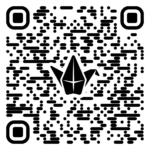Part H: Adaptive Controller Build
STEP 1: Meet Jordan, a passionate drone enthusiast and aspiring pilot. Jordan has cerebral palsy, which affects fine motor control—especially in the hands. While they have motion and can move their arms and fingers, the movements are limited and often unsteady, making it difficult to use small or tightly spaced buttons like those on a standard drone controller. Jordan has always loved watching drones fly and dreams of piloting one, but traditional controls have never worked for them. A picture of Jordan is shown below

STEP 2: Your challenge is to design and build an 8-button drone controller, powered by a Makey Makey, that Jordan can operate with ease, comfort, and confidence. The buttons must be larger and more accessible, but beyond that, the design is up to you. Maybe the right-hand controls are soldered tactile switches on a perfboard, and the left-hand controls are large aluminum foil pads. Maybe you ditch buttons entirely and use soft pads, wearable bands, or other creative switches. The goal is to make something Jordan could actually use to fly a drone—and to bring his dream to life through inclusive design, clever engineering, and thoughtful prototyping. Follow the below steps to complete the challenge:
-
Draw Your Design:
Sketch your controller concept on paper. Label the parts and explain how each input will work for Jordan. Think about what kinds of buttons or sensors would work best based on his needs. -
Prototype Your Design:
Build a rough version using any available materials—cardboard, foil, breadboards, tactile buttons, etc. Connect it to a Makey Makey and test how well it functions. -
Solder and Refine:
Once your prototype works, begin soldering your components to perfboards (if needed), securing your wires, and assembling the final version of your controller. Make adjustments as you go to improve usability, comfort, and performance.

